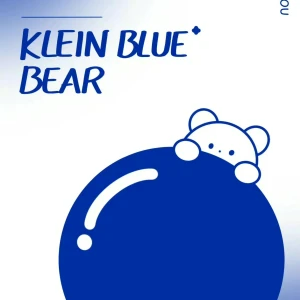 再也不做站长了
再也不做站长了 -
习语是某一语言在使用过程中形成的独特的固定的表达方式。本文所要讨论的习语是广义的、包括成语、谚语、歇后语、典故等。英汉两种语言历史悠久,包含着大量的习语,它们或含蓄、幽默、或严肃、典雅,不仅言简意赅,而且形象生动,妙趣横和,给人一种美的享受。由于地理、历史、宗教信仰、生活习俗等方面的差异,英汉习语承载着不民的民族文化特色和文化信息,它们与文化传统紧密相连,不可分割。习语中的文化因素往往是翻译中的难点。本文试图借助语用学的理论,对英汉习语的翻译作一些探索。
二、英汉习语翻译的具体原则和方法
关于翻译标准,中外翻译理论家们提出了不同的主张。从严复的“信、达、雅”,傅雷的“重神似不重形似”,到张培基先生提出的“忠实通顺”;从瞿秋白的“等同概念”,到美国著名的翻译理论家Eugene A·Nidar的“功能对等(functional equivalence)”或“动态对等(dynamic equivalence)”,我们可以看出,这些主张是相互影响、互为补充、不断完善的,虽然侧重点有所不同,但中心要结晶都是译文要忠实准确地表达原文的意义,保持原作的风格,忠实反是非曲直原作的面貌。所谓忠实表达原文的意义,应指忠实表达原文的字面意义、形象意义和隐含意义三个方面。但是,并不是原文的每句话、每个习语、词汇都同时具备三种意义,有的可能只有字面意义,没有形象意义;有的可能兼有字面意义和形象意义,但没有隐含意义。尤其是,任何两处语言文化都不可能完全对等,要把原文中的三种意义全部再现于译文常常是不可能的。如果字面意义或形象意义与隐含意义在翻译时由于文化的差异出现矛盾,字面意义或形象意义应当服从隐含意义。其次,原文的形象意义在目的语中可能会找不到对应枣或者没有相同的形象,或者虽然形象相同,隐含意义(包括褒贬意义)却冲突,这时首先要考虑的是形象的隐含意义的准确传达,可更换另一个译文诗刊熟悉的形象或得舍弃形象意义,只译出隐含意义。总之,隐含意义,也就是原文意欲表达的意义是最重要的。
在翻译的方法上,直译与意译一直是翻译理论界争论的焦点。我们通过对一些翻译理论及资料的学习与实践认为,直译与意译是相对的,两者之间相互联系,且没有绝对的界线。大到一部作品,小到一个句子的翻译都会兼有直译与意译。一件好的译作总是即有直译,又有意译,直译与决译相结合。我们认为,如果采用直译能准确传达原文多种意义的,就直译,如果不能译出原文多种意义,特别是不能准确译出隐含意义的就采用意译。
The 习 language is the special fixed expression method that the some language becomes during the period of use.This text wants to discuss of the 习 language is a broad sense of,include idiom,byword,riddle,literary reference etc..English-to-Chinese two kinds of language histories is long, including a great deal of 习 language, they or reserved,humor,or serious and cultured, not only talk JIAN3 YI4 GAI, and the image is vivid, the wonderful 趣 is horizontal with, give person a kind of enjoy beautifully.Because of geography,history,religion and faith,the life custom difference of[with] etc., the English-to-Chinese 习 language loads not the people"s race cultural special features and the cultural information, they are close with the cultural tradition to connect with each other, indivisibility.The cultural factor in the 习 language usually is translate a medium crux.This text tries to ask for help language to use to learn of theories, make some quests to the translation of the English-to-Chinese 习 language.
Two,the concrete principle and method of the English-to-Chinese 习 language translation
As for translation the standard, Chinese and Foreign translation the theoreticians put forward different assertion.From strict"letter, reach, 雅 " reply, "heavy looking like not heavy likeness" of the 傅 thunder, arrive"faithfully fluent"s that Mr. ZHANG PEI2 JI put forward;从瞿秋白的“等同概念”,到美国著名的翻译理论家Eugene A·Nidar的“功能对等(functional equivalence)”或“动态对等(dynamic equivalence)”,我们可以看出,这些主张是相互影响、互为补充、不断完善的,虽然侧重点有所不同,但中心要结晶都是译文要忠实准确地表达原文的意义,保持原作的风格,忠实反是非曲直原作的面貌。So-called express the meaning of the original text faithfully, should point the typeface meaning,the image meaning and implicit meaning of the original text of faithful expression three aspects.But, isn"t each words,each习 language,phrase of the original text to remit all to have three kinds of meanings in the meantime, have of may only have the typeface meaning, have no image meaning;Possibility of have and have the typeface meaning and the image meaning, but have no implicit meaning.Particularly BE, any two language cultures all impossibly and completely on an equal footing, want to make three kinds of emersions with all meanings in the original text translate the text in usually is impossible.If the typeface meaning or the image meaning and implicit meaning while translate appear an antinomy because of the difference of the culture, the typeface meaning or the image meaning should obey implicit meaning.Secondly, the image meaning of the original text may can not find in the purpose language to should the 枣 has no same image perhaps, perhaps although the image homology, the implicit meaning(include the praise or blame meaning) but conflict, at this time first want what to consider is an implicit meaning of image of accurate inform, can replace an another to translate the image that the text poem publishes to acquaint with or have to abandon the image meaning, translates an implicit meaning.In fine, implicit meaning be also the meaning that the original text intends for an expression is the most important.
On the method for translate, the literal translation and liberal translation have been the focuses that translates the theories field issue.We think through the study and fulfillment toward some translation theorieses and the data, the literal translation and liberal translation is opposite, both contact mutually, and have no absolute boundary.Big to a work, small to a translations of sentence all would and have the literal translation and liberal translation.A translate to make goodly to always there is literal translation namely, and then have intention to translate, literal translation with definitely translate to combine together.We think that if the adoption literal translation ability is accurate to inform original text various meanings, transliterate, if can"t translate a meanings with various original text, can"t be accurate to translate an implicit meaning especially of adopt liberal translation.
 Chen
Chen -
The custom language is some language the unique fixed expression way which forms in the use process. This article needs to discuss the custom language is generalized, including the idiom, the proverb, a tag line , the literary reference and so on. English to Chinese two languages history glorious, is containing the massive customs language, they or contain, humorous, or serious, elegant, not only brief and to the point, moreover the image is vivid, wonderful interest horizontal and, for human one kind of beautiful enjoying. As a result of aspect the and so on geography, history, religious belief, life custom difference, the English to Chinese custom language load bearing not people"s national culture characteristic and the cultural information, they and the cultural tradition close is connected, inalienable. In the custom language cultural element often is in the translation difficulty. This article attempts with the aid of the pragmatics theory, turns translated work some explorations to the English to Chinese custom language.
Second, English to Chinese custom language translation concrete principle and method
About the translation standard, the Chinese and foreign translated the theoreticians to propose the different position. Duplicate "the letter, reaches severely, elegantly", Fu Lei "is an excellent likeness again not seriously takes the form of", proposes "faithfully to Mr. Zhang Peiji is smooth"; "Equates the concept" from Qu Qiubai, "the function coordinated (functional equivalence)" or "dynamic is coordinated (dynamic equivalence) to American famous translation theoretician Eugene A Nidar", we may see, these positions are affect mutually, for the supplement, unceasingly consummate mutually, although the emphasis point differs from, but the center must crystallize all is the translation needs to be faithful accurately expresses the original text the significance, the maintenance original work style, faithful counter- rights and wrongs original work appearance. So-called faithfully expresses the original text the significance, should refer faithfully expresses the original text the wording significance, the vivid significance and the concealment significance three aspects. But, is not original text each speech, each custom language, the glossary all at the same time has three kind of significances, some possibilities only then the wording significance, does not have the vivid significance; Some possibly has at the same time the wording significance and the vivid significance, but does not have the concealed significance. Any two languages culture all not impossible completely to be in particular coordinated, must reappear the original text in three kind of significances in the translation frequently is not impossible completely. If wording significance or vivid significance and concealment significance in translation time because the cultural difference appears the contradiction, the wording significance or the vivid significance must obey the concealed significance. Next, the original text vivid significance possibly can not be able to find the corresponding jujube in the goal language or not have the same image, or although the image is same, the concealed significance (including appraisal significance) conflicts actually, by now first had to consider was the vivid concealed significance accurate transmission, the removable another translation 诗刊 familiar image or discarded the vivid significance, only translated the concealed significance. In brief, concealed significance, also is the significance which the original text cares for to express is most important.
In the translation method, the literal translation and the transliteration always is translates the theorists argument the focal point. We through believed to some translation theories and the material study and the practice that, the literal translation and the transliteration are relative, two between relates mutually, also not absolute demarcation line. As big as a work, as slightly can have at the same time the literal translation and the transliteration as a sentence translation. A good translated work always namely has the literal translation, also has the transliteration, translates literally with translates definitely unifies. We believed, if uses the literal translation to be able accurately to transmit the original text many kinds of significances, translates literally, if cannot translate the original text many kinds of significances, specially cannot accurately translate the concealment significance to use the transliteration.
In summary, we may the English to Chinese custom language translation principle and the method perform the concrete application.
 kikcik
kikcik -
The idiom is the expression way of unique fixing that a certain language forms in the course of using. The idiom that this text should discuss is generalized , including idiom , proverb , two-part allegorical saying , allusion ,etc.. English-Chinese two languages have a long history , include a large number of idioms , they or implication , humour , or serious , refined, not only it is the precise and to the point,but also the vivid,whose name is the wonderful and interesting and harsh and unreasonable with, give somebody a kind of beautiful enjoyment. Because the difference in geography , history , religious belief , custom of living ,etc., the English-Chinese idiom is not bearing the weight of the people"s national culture characteristic and culture information, they and cultural tradition are continuous closely, inalienable . The cultural factor in the idiom is often a difficult point of the interpreters. This text attempt, spend theory that study through language, make some exploration to English-Chinese interpreter of idiom.
Second , concrete principle and method that the English-Chinese idiom is translated
About the standard of translating, China and foreign countries translated the theoreticians put forward different opinions . Strict " faithfulness, expressiveness and taste " of Fu, " serious to similar to again while being alike in spirit " of Lei Fu, to Zhang PeiJi " faithful and clear and coherent" that Mr. get out of; From Qu Qiubai"s " equates the concept ", get U.S.A. famous Eugene A·Nidar , theoretician of interpreter , " the function is reciprocal (functional equivalence) " or " the trends are reciprocal (dynamic equivalence ) ", we can find out , these opinions are influencing each other , complementing one another , improving constantly, though emphasis points are different to some extent, the centre wants crystallization to be all that translations should express the meaning of the original text faithfully and accuratly, keep the style of the original work , the faithful appearance against the original work of merits. What is called faithful meaning of expressing the original text, should mean the faithful literal meaning of expressing the original text , image meaning and imply three respects of meaning . However, it is not every sentence of the original text , each of idioms , vocabularies that possess three kinds of meanings at the same time , some may have only literal meanings, do not have image meaning; Some may have literal meaning and image meaning concurrently , but has not implied the meaning . Especially, two language any culture can not totally reciprocal, want , reproduce until translation impossible often three all meaning of original text. If literal meaning or image meaning and meaning of implying while translating because the difference of culture appears contradictorily, literal meaning or image meaning should obey the meaning of implying . Secondly, the image meaning of the original text can not correspond to the date or not have the same image in the purpose language, or though image the same, imply meaning (including passing judgement on the meaning ) but conflict, the ones that should consider first at this moment are the accurate janitor who implies the meaning of the image, removable another translation image that Poetry familiar with or must give up the image meaning , it implies the meaning to only translate out. In a word, imply the meaning, that is to say the meaning in which the original text intents to express is the most important.
On the method of translating, literal translation and free translation have been focuses that circles of translation theory have disputed all the time . We adopt study and practice of some translation theories and materials to think , literal translation and free translation are relative, connect each other between the two, and there is no absolute boundary line. Even as big as a work, the translation even as small as a sentence will have literal translation and free translation concurrently . Always there is literal translation promptly in a good translation, there is free translation , literal translation , with translating combining together. We think , if adopt literal translation and can transmit many kinds of meanings of the original text accurately , literal translate, if can"t translate and happen many kinds of meanings of the original text , especially can"t translate the free translation of adoption which implies the meaning out accurately . In sum, we can English-Chinese translation principle and method of idiom specify .
 陶小凡
陶小凡 -
给个翻译站点吧,自己看看吧
www.iciba.com是金山的在线翻译网站
 volcanoVol
volcanoVol -
用金山点点通或地球村试试吧
 床单格子
床单格子 -
我不会啊
